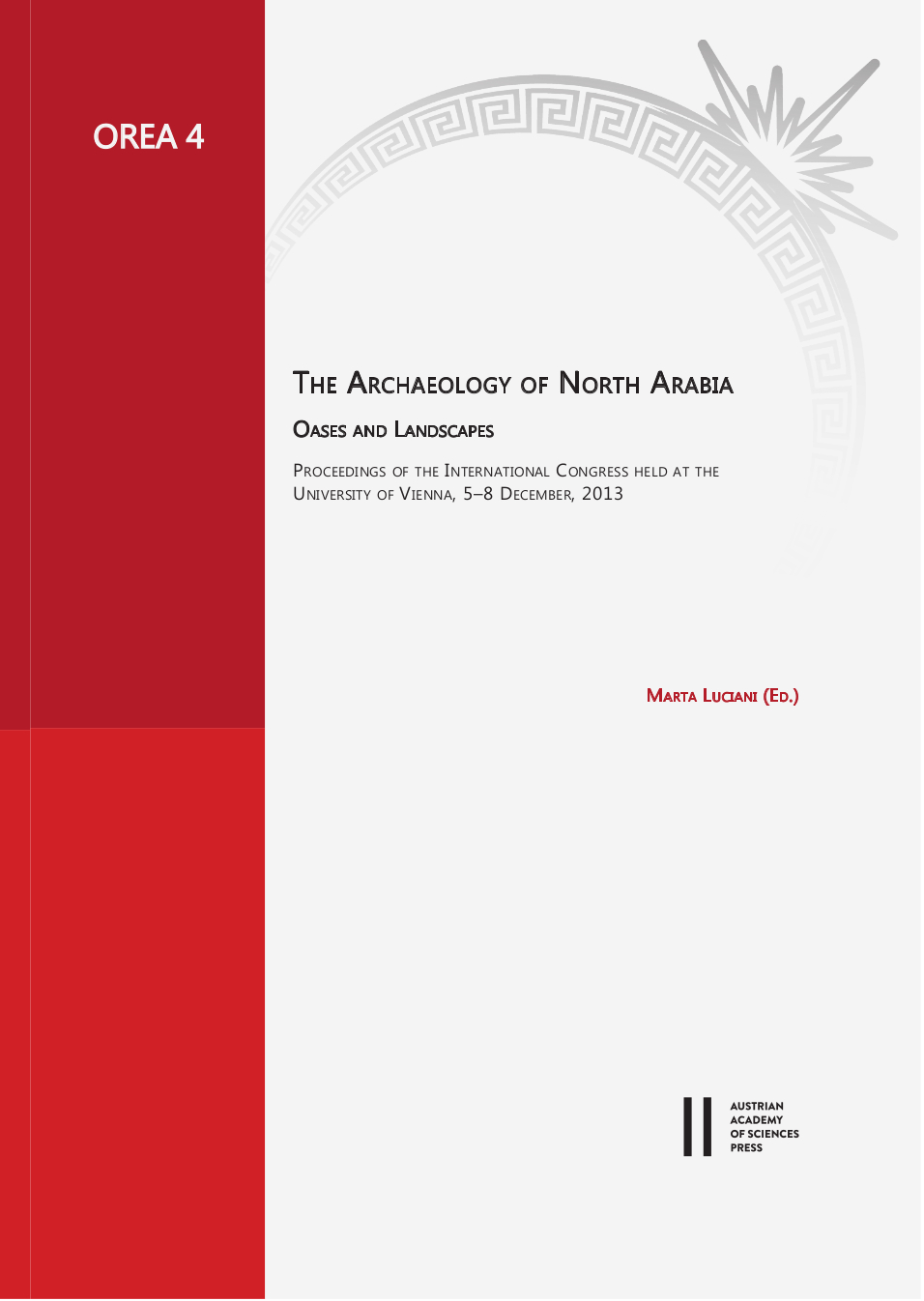
The Archaeology of North Arabia, Oases and Landscapes, pp. 57-78, 2016/11/30
Proceedings of the International Congress held at the
University of Vienna, 5-8 December, 2013
In today’s (hyper-)arid northern Arabia subsistence strategies changed or were complemented twice during the Holocene: Mobile herding economy is supposed to have been introduced during an Early Holocene period of increased humidity. The onset of oasis agriculture is assumed for the Mid to Late Holocene, either during moisture conditions or aridification. Our radiocarbon-dated palynological record of Tayma evidence for the first time for a short Early Holocene ‘humid period’, providing favoured pastures (grasslands), facilitating the spread of herders. About 8000 calBP these grasslands retreated, triggered by aridification. During the Mid Holocene, around 6000 calBP, recorded grape and fig pollen document the beginning of plant cultivation at the oasis of Tayma. Plant cultivation as another subsistence strategy thus was applied during long-term aridification. The few so far documented cultivated plants may point to a not yet fully established oasis agriculture.
Keywords: Holocene vegetation, Holocene climate, northwestern Saudi Arabia, grapes, oasis cultivation, pollen analysis